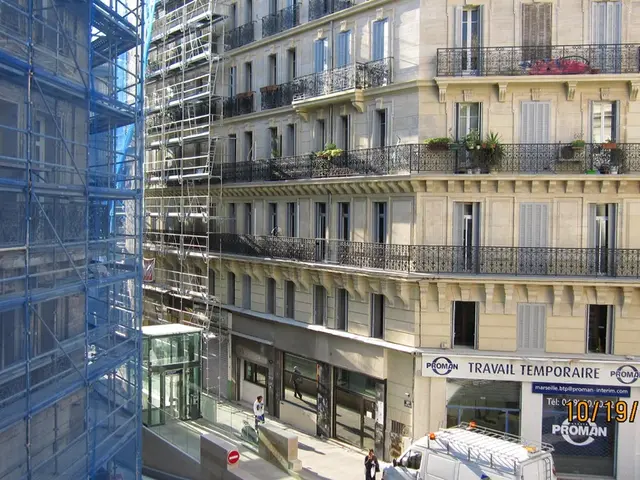Banking authority imposes mortgage caps for initial instances
The Bank of Russia has announced a series of changes to its macroprudential policies, aiming to maintain financial stability and moderate real estate price growth in the Russian market. From September 1, the central bank has reduced the macroprudential add-ons for loans to purchase housing under construction.
This decision does not affect the future tightening of Macroprudential limits in the Individual Housing Construction (IJSC) and unsecured consumer credit segments. The Bank of Russia has set specific limits for these sectors, including minimum down payment requirements, to mitigate risks such as credit risk and market overheating.
The policy involves imposing minimum down payments on mortgages, which serves to limit the loan-to-value (LTV) ratio. By requiring borrowers to make a larger upfront payment, the total exposure of banks and borrowers to price volatility is reduced. This mechanism protects banks from losses due to falling real estate prices and lowers the risk of defaults by ensuring borrowers have sufficient equity in their property.
The Bank of Russia's measures address the problem of rapid price growth and overheating in the Russian real estate market, which was observed after large government-subsidized mortgage programs increased demand excessively and caused housing prices to double. By tightening mortgage lending standards through these macroprudential tools, the Bank of Russia aims to maintain financial stability and moderate real estate price growth.
The Bank of Russia has also highlighted that a significant portion of issuances in the IJSC and consumer loans secured by real estate segments is for loans to borrowers with high debt-to-income ratios, who are more likely to default. In the second quarter of this year, the share of IJSC loans with a debt-to-income ratio above 80% was 30%, while for consumer loans secured by real estate, the share was 46%.
Despite these changes, the Bank of Russia has not made any changes to the quantitative limits on consumer loans secured by real estate. The central bank has also maintained the quantitative limits on mortgages for housing under construction and ready-made housing in multi-apartment buildings until the fourth quarter of this year.
In the future, the Macroprudential limits in the unsecured consumer credit segment will be tightened to the levels characteristic of unsecured consumer credit. The Bank of Russia plans to gradually tighten the Macroprudential limits in both the IJSC and unsecured consumer credit segments. The new limits on mortgages for individual housing construction (IJSC) and consumer loans secured by real estate will start from October 1 of this year.
The Bank of Russia is setting these limits below the average market values that prevailed in the second quarter to reduce risk levels. The central bank's goal is to ensure a stable and sustainable real estate market in Russia, promoting long-term economic growth.
The Bank of Russia, in its pursuit of financial stability and moderation in real-estate price growth, is planning to tighten Macroprudential limits in the Individual Housing Construction (IJSC) and unsecured consumer credit segments. This includes imposing specific limits for these sectors, such as minimum down payment requirements, to mitigate risks associated with credit risk and market overheating.
Moreover, the Bank of Russia is anticipating a gradual tightening of Macroprudential limits in both the IJSC and unsecured consumer credit segments, with the new limits on mortgages for individual housing construction (IJSC) and consumer loans secured by real-estate set to start from October 1. This move is aimed at reducing risk levels and ensuring a stable and sustainable real-estate market in Russia, thereby promoting long-term economic growth.








